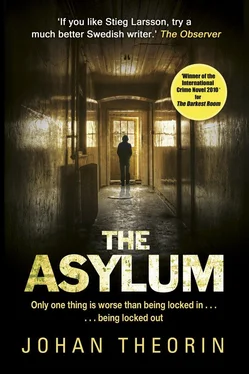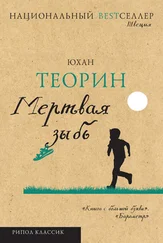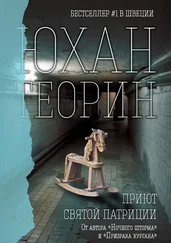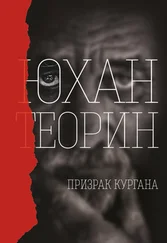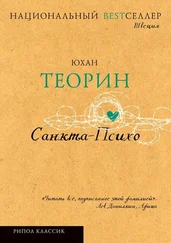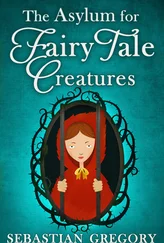‘Is there any particular story you’d like to hear today, Josefine?’
She looks up and nods, several times. ‘The one about the lady who makes animals!’
Jan looks at her. ‘What’s it called?’
‘ The Animal Lady !’
Jan has never heard of it, but Josefine goes straight over to the book boxes, rummages through them and pulls out a thin white book, about the size of an LP record. She’s right; the title is The Animal Lady .
‘OK. Fine.’
The book is similar to all the others in the box, but there is no author’s name, and the picture below the title is barely visible; it is just a faint pencil drawing of a small island and a slender lighthouse. It looks as if it is handmade; when Jan looks more closely he can see that someone has cut the pages and stuck them together with ordinary sticky tape.
He flicks through it. The text is written on the right-hand page. On the left-hand page there are pencil drawings, but like the one on the cover they are so faint they are hardly visible.
Jan is curious; he wants to read The Animal Lady . ‘Come along, everyone!’ he shouts. ‘Story time!’
The children settle down among the cushions.
Jan sits down on the chair in front of them and holds up the book. ‘Today we’re going to read about an animal lady.’
‘What does that mean?’ Matilda asks.
Jan looks to Josefine for help, but none is forthcoming.
‘Well... let’s see.’ He opens the book and begins to read:
Once upon a time there was a lady who knew how to make animals, and her name was Maria Blanker. Maria was very lonely. She had moved to a little island right in the middle of the sea, with a lighthouse that never flashed its bright light. She was living on the island in a little house made of driftwood .
Apparently someone lived in the lighthouse too. There was a name on the mail box: THE GREAT MR ZYLIZYLON. Maria could hear heavy footsteps echoing through the lighthouse every night as someone with big feet stomped up and down the stairs .
Maria wanted to be polite, and had knocked on the door of the lighthouse several times when she first arrived on the island, but she was actually quite pleased that no one opened the door .
Jan stops for a moment; he seems to think he recognizes the name Maria Blanker. But where from?
And the word Zylizylon sounds medical. Perhaps it’s some kind of medication?
He looks at the drawing. It shows a little cottage with a tall lighthouse in the background. The house is pale grey, like driftwood bleached by the sun. The lighthouse is as slender as a matchstick.
‘Don’t stop!’ shouts Josefine.
So Jan carries on:
The lighthouse never flashed its bright light because the ships didn’t need it any more. There were tracks laid out all over the sea these days, so the ships never drifted off course. But there were no tracks near the lighthouse. Maria never saw any ships, and she felt even more lonely .
There were no animals on the island. Maria didn’t like making them any more .
The next picture shows the inside of the cottage: a bare room containing only a table and a chair. A skinny woman with spiky hair and a wide mouth is sitting on the chair, the drooping corners of her mouth protruding like black twigs.
Instead Maria grew carrots and potatoes in the back garden. She drank taminal tea and looked for pretty pebbles on the shore. She still felt lonely, but she never knocked on the door of the lighthouse again. She didn’t want to meet Mr Zylizylon, because the sound of his heavy footsteps on the stairs grew louder and louder every day.
The third drawing shows the thin, grey figure of the animal lady standing in front of the closed iron door of the lighthouse. The picture is so blurred that it is impossible to make out her face. Is she unhappy, or perhaps afraid?
At night Maria dreamed of all the animals she used to make when she was young and happy. People liked to watch her make them; they used to clap when the animals appeared from inside her clothes .
But the animals had got bigger and bigger, stranger and stranger. Maria had been unable to control them. In the end she had been too frightened to make them any more .
The fourth drawing is dark. The animal lady is sleeping in a narrow bed, like a grey shadow. Above her other shadows crawl and writhe around each other as they emerge from a dark tunnel in the wall.
The atmosphere in the drawing is menacing; Jan turns the page and carries on reading:
Then one day something happened that had never happened before. While Maria was gathering pebbles down on the shore, she suddenly saw a ship on the horizon. It seemed to be coming closer, the waves nudging it nearer to the island. Maria realized it had come off track .
When the ship had almost reached the island, the animal lady saw that it was a ferry full of children. All the children were wearing blue helmets, and they had big cushions attached to their backs and tummies .
‘I want a cushion on my tummy!’ shouts Mattias.
‘What’s a horizon?’ asks Matilda.
‘It’s where the earth ends,’ Jan says. He turns the book around — this page isn’t scary — and shows them the thin line beyond the ferry. He points to it. ‘This is what the horizon looks like. Although it’s just an illusion really; the earth doesn’t end there, it’s as round as a beach ball. You know that, don’t you? So the earth never ends, it just carries on until it comes back behind you...’
The children stare at him in silence. Jan sees that he has got himself all tied up in knots, so he carries on reading:
Eventually the ferry ran aground on the island. There was a horrible screeching, grating noise as it drifted on to the rocks. The children jumped ashore, but Maria was too scared to show herself. She had gone into her little house, locked the door and made herself a pot of really strong taminal tea. She could hear cheerful cries outside, but she drank her tea and didn’t open the door .
This picture shows Maria cowering behind closed curtains; they have a chequered pattern which makes Jan think of the barred windows at the hospital. She is pouring hot tea, steaming and bubbling, into a big cup which is all the colours of the rainbow. But what is taminal tea?
‘Hello?’ a girl’s voice shouted. Cautiously Maria peeped out, but the girl wasn’t standing outside her door.
She was standing by the lighthouse.
And the lighthouse door was open.
For the first time since Maria came to the island, the Great Mr Zylizylon had opened the door of his big tower!
‘Hello? My name is Amelia... is anyone home?’
This time the drawing shows what Maria could see through her window: a little girl in a thin dress standing in front of the black door of the lighthouse. But one thing distinguishes the girl from the other children, Jan notices. She is not wearing a helmet, and there are no cushions attached to her body.
The children are as quiet as mice. The atmosphere in the room is thick with anticipation.
Jan turns the page.
Through the window Maria watched as little Amelia walked up the steps to the door of the lighthouse.
‘Hello?’ she called again.
She took one more step; she was almost inside now.
Then Maria did something without even thinking about it. She raised her hand, closed her eyes, and quickly made a guardian animal.
Jan was expecting the children to ask what a guardian animal is — he doesn’t know either — but no one speaks.
Maria could give anyone at all a guardian animal, but unfortunately she never knew what they were going to look like. So when Maria opened her eyes she saw that Amelia was being hugged by something that looked like a big frog. A yellow frog with long, hairy legs.
Читать дальше
